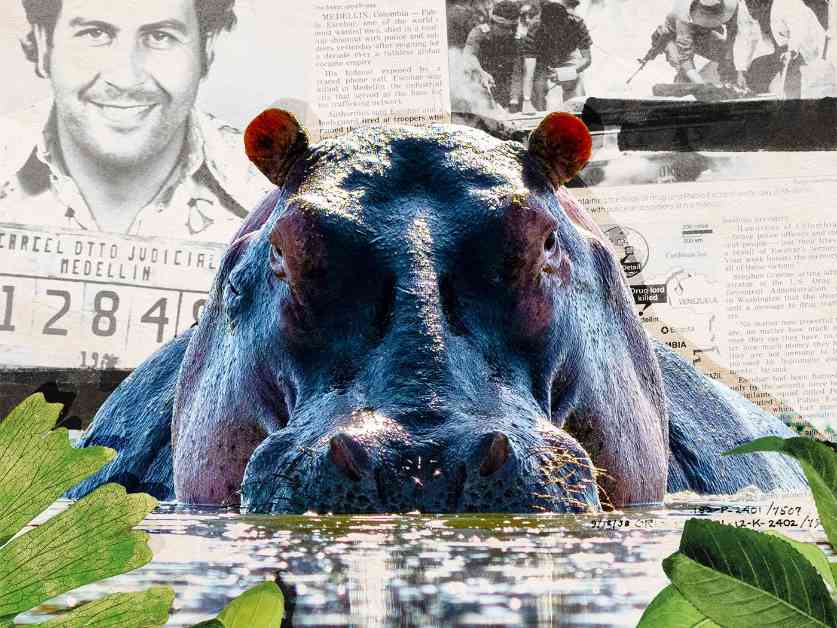In the 1980s, Pablo Escobar, the notorious drug lord, imported four hippos to his hacienda in Antioquia province in northwestern Colombia. These hippos, along with other exotic animals, were part of his private menagerie. After Escobar’s death, the hippos were left to roam free, leading to a population explosion that now threatens the region’s ecosystem. Colombian authorities have tried various methods to control the hippo population, including sterilization programs, but success has been limited.
The descendants of Escobar’s hippos now number nearly 200 and are thriving in the Colombian environment. However, their uncontrolled growth poses a threat to the local waterways and native species. The hippos have no natural predators in Colombia, and their excrement is polluting the water resources, leading to concerns about the overall health of the ecosystem.
Conservationists in Colombia have embarked on a program to sterilize the hippos in the wild, but the process is challenging and costly. The hippos are difficult to capture and tranquilize, making it hard to implement effective sterilization measures. Additionally, there have been concerns about potential human-hippo conflicts, as the animals can be aggressive when threatened.
Ecologists like Rebecca Lewison, who study hippo populations in Africa, provide insights into the challenges of managing the Colombian hippo population. Habitat loss, human-wildlife conflicts, and climate change are some of the major threats faced by hippos in their native habitats. The situation in Colombia is unique and unprecedented, requiring a careful balance between human needs and wildlife conservation.
While the Colombian hippos have captured the public’s imagination, it is essential to remember that hippos are native to Africa and face conservation challenges there as well. Collaborative efforts between governments, organizations, and researchers are needed to develop sustainable conservation plans that protect both people and wildlife. Despite the complexities of the issue, there is hope that a balanced solution can be found to ensure the long-term survival of hippos in their natural habitats.






